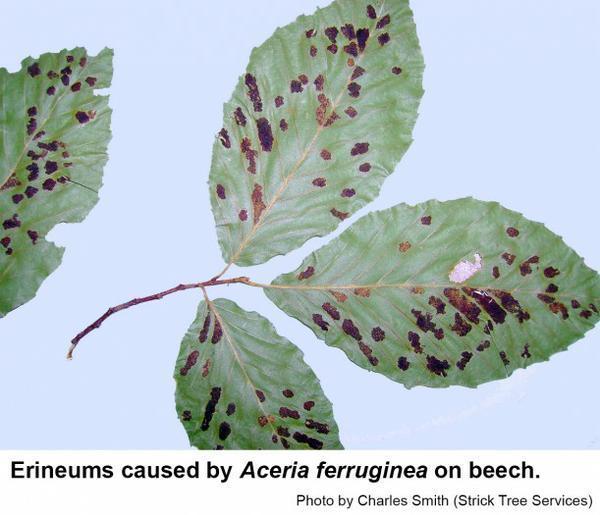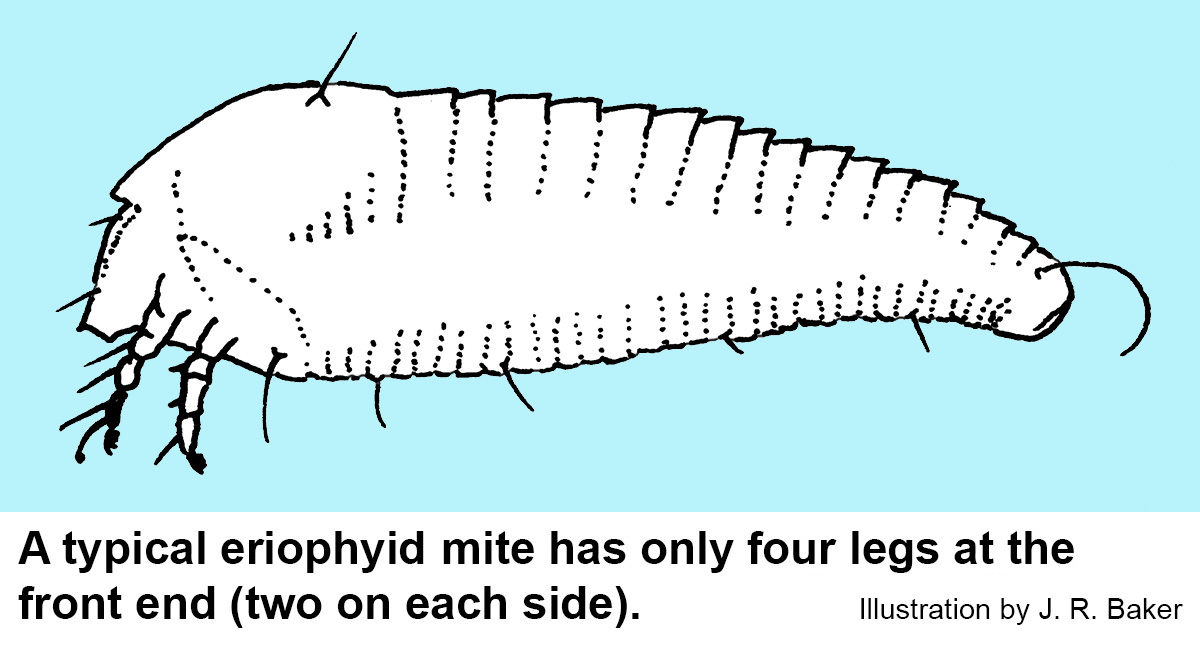Description and Biology
Beech erineum mites, Aceria ferruginea, are microscopic eriophyid mites that feed only on American beech trees. The mites are very small (0.2 mm long). They apparently overwinter on the bark or in the buds of beech as a special reddish females that crawl to the petioles in early spring just as the new growth emerges from the buds. These mites feed on the leaves and cause the cells on which they feed to develop into a velvety pale yellow to pink patch in which the reddish forms lay their eggs. From these eggs, whitish females and males develop and reproduce throughout the growing season. Once the leaves are fully expanded, the mites can no longer induce gall formation. In late summer as the erineums dry out, a generation of reddish mites migrates to the buds where they overwinter inside, becoming active in the following spring. The galls are not likely to cause lasting injury to the beech nor will these mites infest any other kind of ornamental plant.
Host Plant
American beech is the only known host of the beech erineum mite. The mite causes velvety bumps on the lower leaf surface that eventually dry out and turn brown. Beech erineum mites cause neglegible damage to the overall health of an established tree.
Residential Recommendation
Eriophyid mites in general are susceptible to Sevin insecticide. Should the decision to treat be made, the infested tree could be treated in late winter to kill the overwintering mites or anytime once the new growth has emerged and hardened off a little.
References
- An Illustrated Guide to Plant Abnormalities Caused by Eriophyid Mites in North America. Keifer, H. H. et al. 1982. USDA ARS Agr. Handbook No. 573. 178 pages.
- No Common Name (Aceria ferruginea). Anonymous. 2013. Maryland Biodiversity Project.
- Species Aceria ferruginea. Anonymous. 2013. Bugguide, hosted by Iowa State University Entomology.
- Extension Plant Pathology Publications and Factsheets
- Horticultural Science Publications
- North Carolina Agricultural Chemicals Manual
For assistance with a specific problem, contact your local N.C. Cooperative Extension Center
This Factsheet has not been peer reviewed.
Publication date: Nov. 5, 2013
Reviewed/Revised: Oct. 9, 2019
Recommendations for the use of agricultural chemicals are included in this publication as a convenience to the reader. The use of brand names and any mention or listing of commercial products or services in this publication does not imply endorsement by NC State University or N.C. A&T State University nor discrimination against similar products or services not mentioned. Individuals who use agricultural chemicals are responsible for ensuring that the intended use complies with current regulations and conforms to the product label. Be sure to obtain current information about usage regulations and examine a current product label before applying any chemical. For assistance, contact your local N.C. Cooperative Extension county center.
N.C. Cooperative Extension prohibits discrimination and harassment regardless of age, color, disability, family and marital status, gender identity, national origin, political beliefs, race, religion, sex (including pregnancy), sexual orientation and veteran status.


